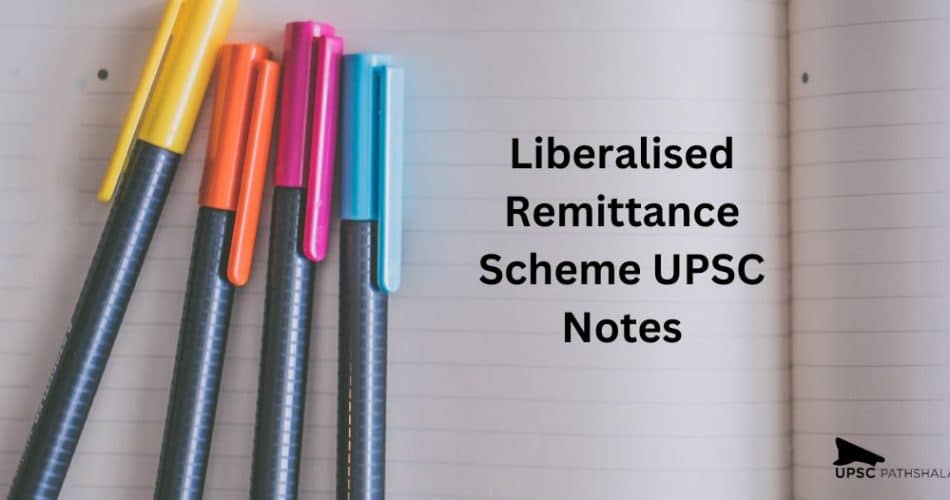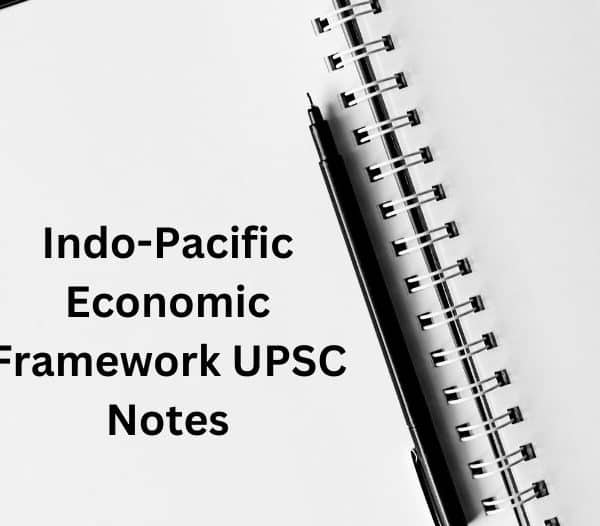Welcome to UPSC Current Affairs Notes, where we bring you the latest updates and insights on various topics crucial for the Union Public Service Commission (UPSC) examination. In this blog post, we will delve into the H1- Liberalised Remittance Scheme, a significant concept in the realm of UPSC preparation.
Aspiring civil servants know the importance of staying up-to-date with current affairs, and the Liberalised Remittance Scheme (LRS) holds a key place in the economic landscape of India. With the UPSC syllabus encompassing a wide range of subjects, including economics, finance, and international relations, understanding the nuances of the LRS becomes essential.
In this blog post, we will explore the intricacies of the Liberalised Remittance Scheme, its objectives, the recent developments, and its impact on the Indian economy. We will also analyze the implications of the scheme from a global perspective, considering its role in shaping India’s foreign exchange reserves and international trade dynamics.
Whether you are a UPSC aspirant aiming to strengthen your knowledge base or a curious individual seeking clarity on the Liberalised Remittance Scheme, this blog post will provide you with comprehensive insights and analysis. So, let’s dive into the world of LRS and unravel its significance in the context of UPSC preparation.
Also Read: Operation Kaveri UPSC: Let’s Prepare the UPSC Notes for Current UPSC Topic!
What is the Liberalised Remittance Scheme (LRS)?
The Liberalised Remittance Scheme (LRS) is a framework introduced by the Reserve Bank of India (RBI) that allows resident individuals in India to remit a certain amount of money abroad for various purposes. It provides a means for Indian residents to diversify their investment portfolio, acquire foreign assets, and engage in permissible transactions with individuals and entities outside India.
Under the LRS, individuals are permitted to remit a specified amount of money in a financial year for eligible purposes, such as education, travel, medical treatment, maintenance of relatives abroad, and investment in foreign stocks and real estate. The scheme aims to facilitate ease of transactions for residents and encourage capital account convertibility.
Also Read: Kesavananda Bharati Case UPSC: Let’s Acknowledge the UPSC Notes for the Significant Topic!
Initially introduced in 2004 with a limit of USD 25,000 per financial year, the LRS has witnessed several revisions over the years. The current limit for remittances under the scheme stands at USD 250,000 per financial year, effective from May 26, 2015. This limit applies to each resident individual and is subject to periodic reviews by the RBI.
The LRS is applicable to all resident individuals, including minors, and it allows for remittances in any freely convertible foreign currency. However, certain prohibited transactions, such as remittance for lottery winnings, gambling, speculative activities, and investments in prohibited entities, are not permitted under the scheme.
The Liberalised Remittance Scheme has played a significant role in promoting globalization, expanding cross-border transactions, and encouraging investments by Indian residents in foreign assets. It has provided individuals with opportunities for international exposure, diversification, and personal growth while contributing to the overall development of the Indian economy.
Economy Notes on Liberalised Remittance Scheme for UPSC Current Affairs
The Liberalised Remittance Scheme (LRS) holds great significance in the realm of UPSC Current Affairs and the Indian economy as a whole. Here are some key economy notes on the LRS:
- Objective: The primary objective of the LRS is to facilitate and streamline the process of resident individuals remitting money abroad for various permissible purposes. It aims to provide individuals with opportunities for international transactions, investments, education, travel, and medical needs, while ensuring regulatory compliance.
- Capital Account Convertibility: The LRS plays a crucial role in moving towards capital account convertibility, which is the freedom to convert domestic financial assets into foreign financial assets and vice versa. It allows individuals to diversify their investment portfolio by investing in foreign stocks, real estate, and other permissible assets.
- Remittance Limit: The LRS has seen revisions in remittance limits over the years. The current limit stands at USD 250,000 per financial year. This limit applies to each resident individual and covers a wide range of permissible transactions. However, it is essential to note that the RBI periodically reviews and revises these limits based on the prevailing economic conditions.
- Eligible Purposes: The LRS permits remittances for various purposes, including education, travel, medical treatment, maintenance of relatives abroad, and investment in foreign assets. It provides opportunities for Indian students to pursue higher education abroad, individuals to access quality healthcare services overseas, and investors to diversify their portfolios globally.
- Prohibited Transactions: While the LRS allows for a wide range of transactions, certain activities are prohibited under the scheme. Remittances for purposes such as lottery winnings, gambling, speculative activities, and investments in prohibited entities are not permitted. This ensures the proper use of remittances and protects individuals from fraudulent practices.
- Impact on the Indian Economy: The LRS has a significant impact on the Indian economy. It encourages foreign investment, promotes globalisation, and contributes to the balance of payments. By allowing residents to invest in foreign assets, it diversifies their portfolios and helps in managing risks. Additionally, it also supports the growth of the education and healthcare sectors by facilitating international exposure and access to quality services.
- Monitoring and Reporting: The RBI closely monitors remittances under the LRS to ensure compliance with regulations. Authorized dealers and banks are responsible for monitoring and reporting these transactions to the RBI. This helps in maintaining transparency and preventing misuse of the scheme.
Also Read: Gravitational Lensing UPSC: Here Are the UPSC Notes for the Best Preparation!
Understanding the nuances of the Liberalised Remittance Scheme is crucial for UPSC aspirants, as it forms a part of the economic and financial awareness required for the examination. Being aware of the scheme’s objectives, limits, eligible purposes, and its impact on the Indian economy will enable aspirants to tackle related questions effectively in the UPSC examination.
Conclusion
In conclusion, the Liberalised Remittance Scheme (LRS) is a significant framework introduced by the Reserve Bank of India (RBI) that allows resident individuals in India to remit a certain amount of money abroad for various permissible purposes. It aims to facilitate ease of transactions, encourage capital account convertibility, and provide individuals with opportunities for international exposure and diversification.
The LRS has undergone revisions over the years, with the current limit set at USD 250,000 per financial year. This limit applies to each resident individual and covers a range of eligible purposes such as education, travel, medical treatment, maintenance of relatives abroad, and investment in foreign assets.
The scheme has played a pivotal role in promoting globalization, encouraging foreign investments, and contributing to the balance of payments in the Indian economy. It has provided individuals with the means to diversify their investment portfolios, access quality education and healthcare services globally, and engage in permissible transactions with entities outside India.
However, it is important to note that certain transactions, such as remittance for lottery winnings, gambling, speculative activities, and investments in prohibited entities, are not permitted under the scheme.
As UPSC aspirants, understanding the nuances of the Liberalised Remittance Scheme is crucial, as it forms part of the economic awareness necessary for the examination. Familiarity with the scheme’s objectives, remittance limits, eligible purposes, and its impact on the Indian economy will enhance your ability to address related questions effectively in the UPSC examination. Stay updated with the latest developments and amendments to the LRS to stay well-prepared for the exam and grasp the dynamics of the evolving global financial landscape.






